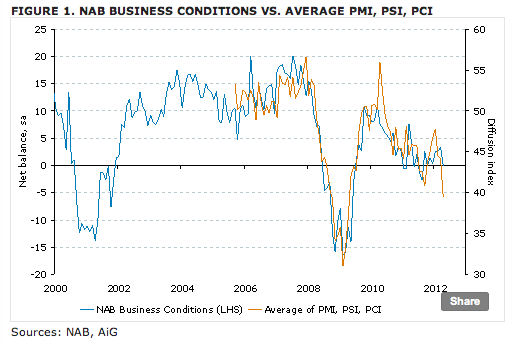
From SBS today:
An early return to surplus has a political aim; to boost voters’ trust in the government – but it can’t hurt the economy, says former adviser to the PM Stephen Koukoulas.
An early return to surplus would push interest rates down and allow the government to invest more in welfare programs, says economist and former government adviser Stephen Koukoulas.
“Getting back to surplus … means the government is starting to rebuild its savings, it’s starting to decrease the size of government in the economy and … preparing for the next economic shock, whenever that may come along,” he says.
However, Mr Koukoulas didn’t deny the political reasons behind the government’s push for an early return to surplus following the global financial crisis.
“We’re within 18 months from having the next election, and one of the issues in voters’ minds is economic credibility,” he says.
This is Ricardian Equivalence, the idea that when the government saves, the private sector decides to spend, owing to the rise in confidence (fairy). It’s a questionable notion at the best of times, although could be seen as a misinterpretation of sectoral balance accounting identities, which are iron clad, and tell us that when you run an external deficit and the government decides to save then the private sector has no choice but to borrow, or have a recession. In times of deleveraging, when the private is killing itself to save, like now, Ricardian Equivalence is pretty much the dumbist idea around (as Europe shows nicely).
But the confidence fairy has also seized a bunch of bank economists today. From Business Spectator:
Encouraging retail sales and building approvals data could mean there is less of a chance of another interest rate cut by the Reserve Bank of Australia soon.
Meanwhile, the ABS also reported that retail spending rose 0.9 per cent in March, which was above market expectations of a 0.2 per cent rise for the month of March.
Macquarie senior economist Brian Redican on Monday said the retail numbers were the ones that really stood out.
“I don’t think policy makers are going to be doing cartwheels in the street and saying its all up from here,” he said.
“It certainly reduces the chances of a follow-up move by the Reserve Bank in the next couple of months.
Redican is very good and one can assume that these quotes were taken before he looked at the April NAB Survey and the ANZ job ads balls up. Next up:
JP Morgan economist Ben Jarman said the retail and building approvals numbers showed the Australian economy was in a better position than previous data had suggested.
“In retail trade we have the strongest number for at least a year, which is surprising given the context we’re looking at, with falls in consumer confidence and growing concerns about the global economy again,” he said.
“So it runs contrary to that, but if you look at the breakdown, there are some broad-based improvements.
“We don’t think this means that consumers are getting excited, it’s just a bit of stabilisation.”
…The improved building approval data was also indicative of a healthier sector than suggested by earlier data, Mr Jarman said.
…”Overall, we think this data is showing us that things are a little bit more stable than the story that some of the bears are painting.”
Then it’s Paul Bloxham, who has been quietly slipping into a bear suit this year but forgot his claws today:
HSBC Australia chief economist Paul Bloxham said the data showed conditions in the retail and building sectors were improving, even before last Tuesday’s rate cut.
Following that rate cut, both sectors are likely to continue to strengthen, he said.
“These are the sectors, retail and housing, that are most interest rate sensitive; these are the parts of the economy that, when you get the effects of the RBA’s cut, will see the most significant improvement,” he said.
“So they are already looking like they are picking up and bit and they will get an extra fillip from that rate cut.”
Can I just say that yes, March was good. But one month of good retail and improved building approvals, which is very volatile and rising from a low base, is not enough to make these bold predictions. I’m all for a better economy but come on, it’s ancient history. The April data flow has been disastrous and a follow up cut in June is guaranteed if things don’t improve. Here’s a neat chart by ANZ summarising the April flow:

In fact, the data today has to put another 50bps emergency move on the table, all the more so given The Kouk’s declaration of Ricardian insanity.

